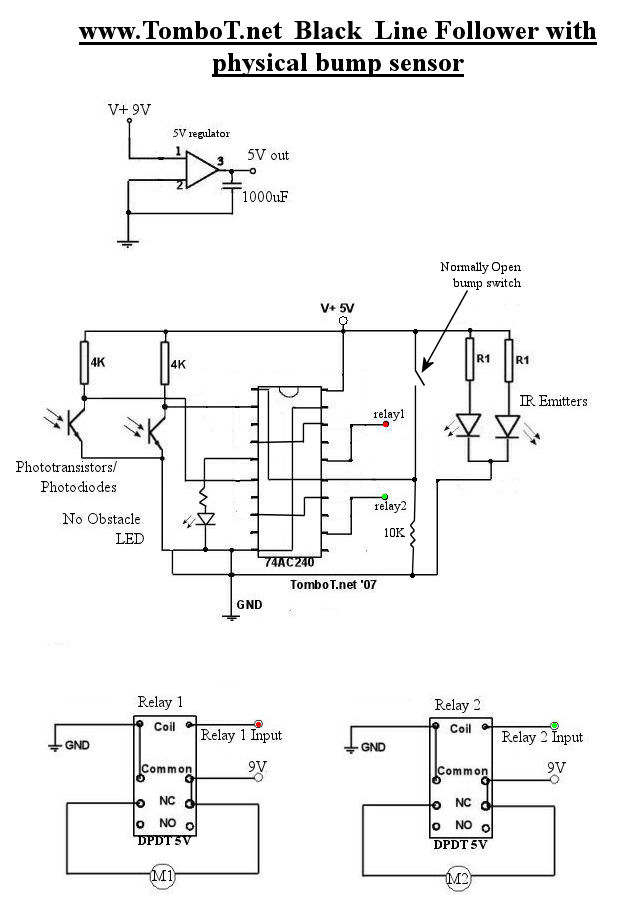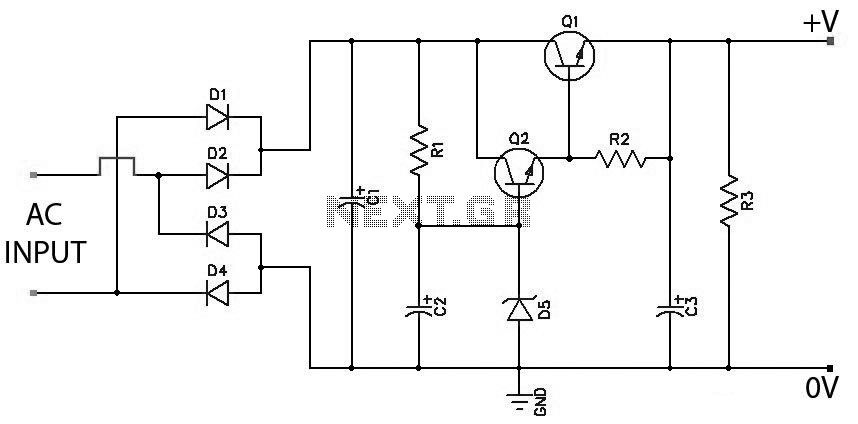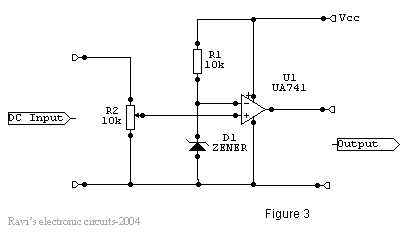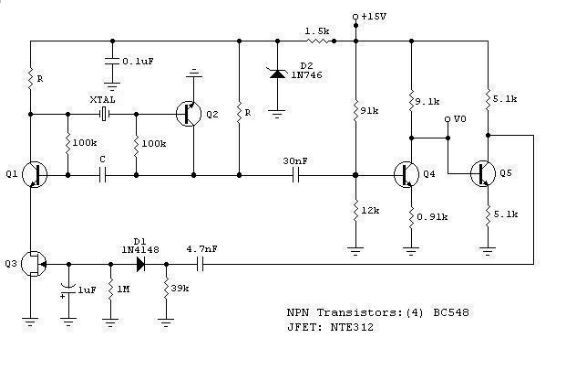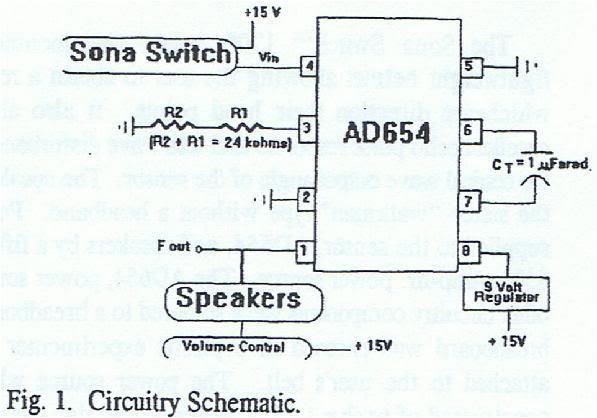
LOW DROPOUT THREE TERMINAL REGULATORS
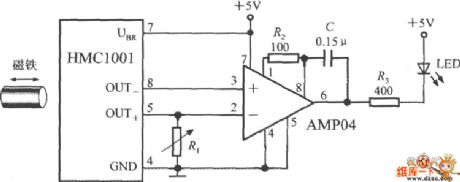
After the battery is connected, the movement of the touch stick activates the light source, which illuminates the photosensitive tube and generates a light current. This triggers the first level 3DG6 to turn on, allowing the emitter to output a signal. This signal is coupled to the subsequent stage through a 10 µF capacitor, which activates the Schmitt trigger circuit, producing an output signal to control the gate circuit. The circuit principles indicate that the power grid connects to the third pin of transformer B via switch J1's normally closed contact. R1 functions as a sample resistance, while the control circuit comprises BG1 and BG2, which can modify the control point by adjusting W. When the power grid voltage drops below 220V, J1's normally closed contact switches transformer B to boost mode. If the output voltage remains below 220V, J2's normally closed contact connects to the fifth pin of the transformer. Conversely, if the voltage exceeds 220V, J2 engages and connects to the fourth pin. When the power grid voltage exceeds 220V, R1's sample triggers J1 to engage, connecting to the fifth pin of the transformer, thus configuring it to buck mode. If the output voltage surpasses the predetermined threshold, J2 is controlled to engage by R4's sample, connecting the normally open contact to the fourth pin. The selection of components is based on the transformer core size and the diameter of the enameled wire. The iron core can utilize sizes from 19G to 24 ½ 25, while the coil should employ high-strength enameled wire with diameters between 0.27 mm and 0.35 mm, wound without packing paper between layers. The winding specifications include 48 turns for the first to second layer, 822 turns for the second to third layer, and 85 turns for both the third to fourth and fourth to fifth layers using 0.41 mm to 0.51 mm enameled wire. BG1 and BG3 are selected as 3DG small power transistors, while BG2 and BG4 are PNP silicon medium power transistors. There are no specific requirements for the resistors or capacitors used in the circuit. The functions of this circuit include alarm, display, timing, digital display, and temperature display. The MM5406 component serves as the clock, featuring a PMOS IC in a 40-pin package with functions such as alarm, stop alarm, sleep mode, 12/24-hour time selection, second display, fast hour setting, slow minute setting, and 50/60Hz clock selection. The MM5407 is a thermometer IC with a temperature range of -40°C to +88°C, utilizing either LM334 or SL334 as the temperature sensor, with a temperature coefficient of 10mV/°C, adjustable by W4. This circuit includes a 9V backup battery, which maintains clock functionality during AC power outages, although the LED will turn off due to the power failure. The circuit diagram illustrates a practical infrared reflecting automatic lamp circuit that activates when approached and deactivates when the user departs, suitable for locations such as storage rooms, bathrooms, or as lighting for mirrors. The schematic also depicts an infrared light emitter circuit operating at an oscillation frequency of 20kHz, alongside an infrared light receiver circuit utilizing a static power memory self-locking relay (DC5V ZS-01). Additionally, it presents an automatic toilet lamp circuit that illuminates upon entry and extinguishes upon exit, incorporating a light control feature that prevents activation during daylight. LED1 and LED2 are specified as PH303 type infrared emitting diodes. Furthermore, the schematic includes an automatic lamp utilizing microwave radar (TX982), designed to avoid interference from ambient light and facilitate easy installation, making it ideal for bathrooms, storage areas, and mirror lighting. This device activates when individuals approach and turns off upon their departure. Lastly, the diagram features an automatic lamp employing TWH9248/TWH9249 microwave emission and receiving sensors, which operates under the condition that the lamp will not illuminate in bright daylight or well-lit environments, ensuring functionality primarily during evening hours.After the battery is clipped, because the movement of touch stick will make the light source shine to photosensitive tube, and produce light current, the first level 3DG6 turns on, the emitter outputs signal, the singal is coupled to back level by 10 F capacitance, Schmitt circuit is triggered and flipped, it outputs singal to control the gate ci rcuit. (View) The principles of circuit: the power grid is connected to 3 foot of transformerB by switch, J1`s normally closed contact. R1 is sample transistance, the control circuit is composed of BG1, BG2, it can change the control point by adjusting W.
When the power grid is lower than 220V, J1 normally closed contact changes the transformer B into boost type. If the output voltage does not exceed 220V, J2 normally closed contact connects to transformer 5 foot.
If it is higher than 220V, J2 pulls in and connects to transformer 4 foot. If the power grid is higher than 220V, it controls J1 to pull in by R1 sample, it is connected to transformer 5 foot, then it willform buck type. If output terminal voltage exceeds the set value, then to control J2 pull in by R4 sample, the normally open contact is connected to 4 foot.
The selection of components: regulator power depends on the transformer iron core section and enameled wire diameter. The iron chip can use 19G—(24 ½ 25), the coil adopts 0. 27~0. 35 high strength enamelled wire to close winding, it should not use packing paper between layers. 1~2 should go around 48 turns, 2~3 should go around 822 turns, from the third foot it uses 0. 41~0. 51 enamelled wire, 3~4, 4~5 all go around 85 turns. BG1, BG3 chooses 3DG small power tube, BG2, BG4 use PNP silicon middle power tube. There is no special requirements for resistance capacitance. (View) The functions of this circuit are: alarm, display, timing, digital display and temperature display.
MM5406 is the part of clock, it is PMOS IC, 40-foot packaging, its functions include: alarm, stop alarming, sleep, 12/24h time selection, second display, fast set h, slow set min, 50/60Hz clock selection. MM5407 is thermometer used IC, the temperature range is -40~+88ƒ, the temperature sensor uses LM334 or SL334, the temperature factor is 10mV/ƒ, it can be adjusted by W4.
This circuit has 9V spare battery. When the AC power is cut off, this battery is used as power supply, then the time clock works normally, but LED will be turned off due to the power failure. (View) As the diagram shows it is a practical infrared reflecting automatic lamp circuit. When you go closely to it, the lamp lights up. When you leave, the lamp goes out. It can be used for home storage room, bathroom lighting or dresser mirror front lamps and other occasions.
(View) As shown in the figure, circuit (a ) is an infrared light emitter circuit, the oscillation frequency is 20kHz; ( b) is an infrared light receiver circuit and K uses static power consumption memory self-locking relay ( DC5V ZS-01 ). (View) As shown in the figure for the automatic toilet lamp circuit, the lamp lights up when people come in and goes out when people go out.
At the same time the circuit also has a light control function. The circuit automatically block at daytime, the lamp doesn`t light. LED1, LED2 use PH303 type infrared emitting diode. (View) As the diagrams shows it is a automatic lamp with microwave radar TX982. Its feature is that the circuit will not be interfered by its own light and it is vey easy to be installed. It is suitable for washing room, storage room, dresser mirror light etc. It can realize the function that the lamp lights up when people come and it goes out when people leave.
(View) As the diagram shows, it is a automatic lamp which uses TWH9248/TWH9249 microwave emission and receiving sensor made in Guangdong Zhongshan Dahua electronics factory. It has the follow function: When the light at daytime or in room is strong, the lamp will not light up and when it is evening, t
🔗 External reference
When the power grid is lower than 220V, J1 normally closed contact changes the transformer B into boost type. If the output voltage does not exceed 220V, J2 normally closed contact connects to transformer 5 foot.
If it is higher than 220V, J2 pulls in and connects to transformer 4 foot. If the power grid is higher than 220V, it controls J1 to pull in by R1 sample, it is connected to transformer 5 foot, then it willform buck type. If output terminal voltage exceeds the set value, then to control J2 pull in by R4 sample, the normally open contact is connected to 4 foot.
The selection of components: regulator power depends on the transformer iron core section and enameled wire diameter. The iron chip can use 19G—(24 ½ 25), the coil adopts 0. 27~0. 35 high strength enamelled wire to close winding, it should not use packing paper between layers. 1~2 should go around 48 turns, 2~3 should go around 822 turns, from the third foot it uses 0. 41~0. 51 enamelled wire, 3~4, 4~5 all go around 85 turns. BG1, BG3 chooses 3DG small power tube, BG2, BG4 use PNP silicon middle power tube. There is no special requirements for resistance capacitance. (View) The functions of this circuit are: alarm, display, timing, digital display and temperature display.
MM5406 is the part of clock, it is PMOS IC, 40-foot packaging, its functions include: alarm, stop alarming, sleep, 12/24h time selection, second display, fast set h, slow set min, 50/60Hz clock selection. MM5407 is thermometer used IC, the temperature range is -40~+88ƒ, the temperature sensor uses LM334 or SL334, the temperature factor is 10mV/ƒ, it can be adjusted by W4.
This circuit has 9V spare battery. When the AC power is cut off, this battery is used as power supply, then the time clock works normally, but LED will be turned off due to the power failure. (View) As the diagram shows it is a practical infrared reflecting automatic lamp circuit. When you go closely to it, the lamp lights up. When you leave, the lamp goes out. It can be used for home storage room, bathroom lighting or dresser mirror front lamps and other occasions.
(View) As shown in the figure, circuit (a ) is an infrared light emitter circuit, the oscillation frequency is 20kHz; ( b) is an infrared light receiver circuit and K uses static power consumption memory self-locking relay ( DC5V ZS-01 ). (View) As shown in the figure for the automatic toilet lamp circuit, the lamp lights up when people come in and goes out when people go out.
At the same time the circuit also has a light control function. The circuit automatically block at daytime, the lamp doesn`t light. LED1, LED2 use PH303 type infrared emitting diode. (View) As the diagrams shows it is a automatic lamp with microwave radar TX982. Its feature is that the circuit will not be interfered by its own light and it is vey easy to be installed. It is suitable for washing room, storage room, dresser mirror light etc. It can realize the function that the lamp lights up when people come and it goes out when people leave.
(View) As the diagram shows, it is a automatic lamp which uses TWH9248/TWH9249 microwave emission and receiving sensor made in Guangdong Zhongshan Dahua electronics factory. It has the follow function: When the light at daytime or in room is strong, the lamp will not light up and when it is evening, t
🔗 External reference
